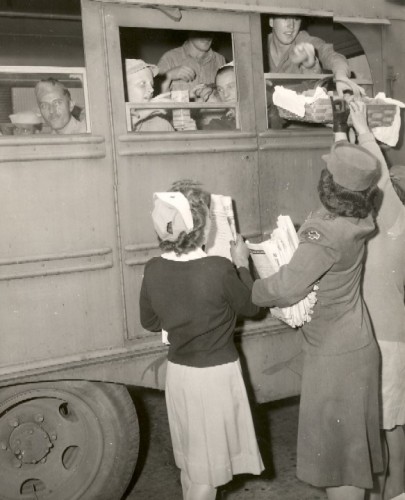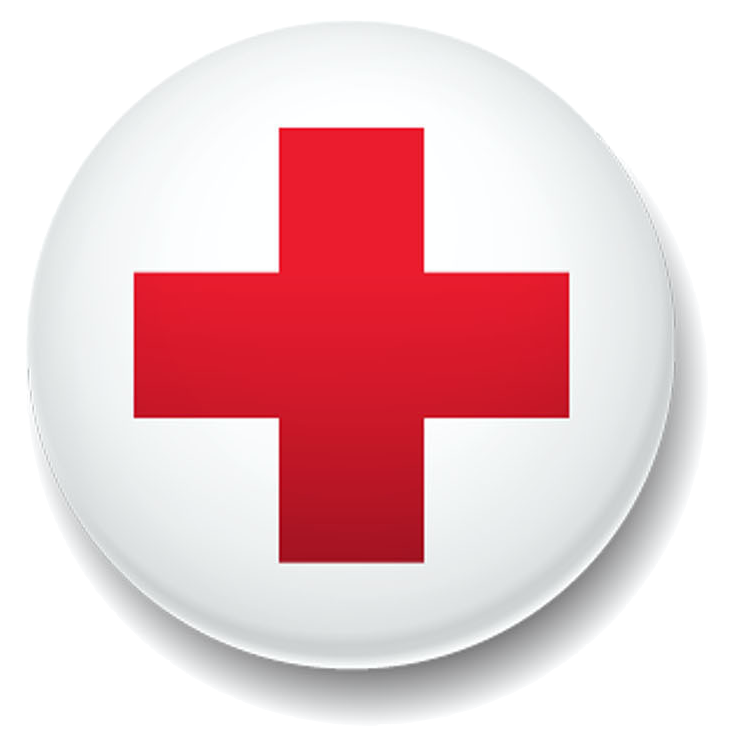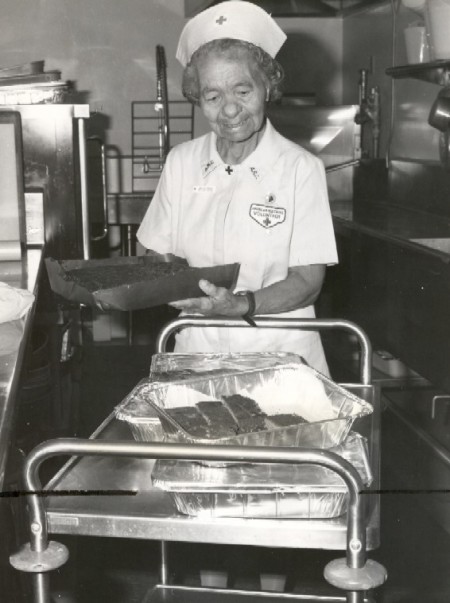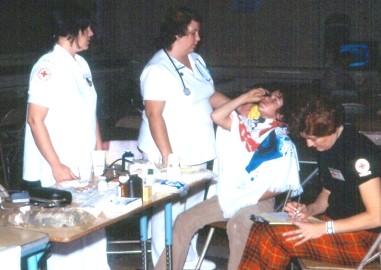 Throughout the Red Cross Month of March, the Red Cross Los Angeles Region is Celebrating its 100 Years of Service with a series titled: Centennial Flashback. This will be a historical snapshots about the Red Cross L.A. Chapter in action during the past 100 years.
Throughout the Red Cross Month of March, the Red Cross Los Angeles Region is Celebrating its 100 Years of Service with a series titled: Centennial Flashback. This will be a historical snapshots about the Red Cross L.A. Chapter in action during the past 100 years.
The U.S. entered the war after the attack on Pearl Harbor on December 7, 1941. The next day, thousands of people lined up outside our chapter’s headquarters on Menlo Avenue waiting to become volunteers. They knew the services of the American Red Cross would be needed more than ever before.
During the next four years, the chapter grew from a handful of workers in a converted residence to a force of 40,000 with offices and workrooms scattered throughout the city.
Volunteers served in a number of areas: Canteen, Surgical Dressings and Production as well as in Nursing and First Aid instruction. Still other devoted their time to fundraising, a vitally important operation in view of the new demands on the chapter.
Services to the military changed and expanded as scores of troops were placed in and around the city to protect aircraft plants from attack. Anti-aircraft units, barrage balloons and Coast Guard contingents were stationed along the coast and in the hills. Mobile canteens began regular outpost duty. Chapter branches and districts provided canteen services in Inglewood, the harbor district, Beverly Hills, West L.A. and the San Fernando Valley. Volunteers signed an oath to keep the outpost locations a secret.
 The Production Department, for the first time in Red Cross history, utilized used clothing to make garments for civilian populations hit by bombing. The Surgical Dressings volunteers spent hours rolling bandages used to treat the wounded.
The Production Department, for the first time in Red Cross history, utilized used clothing to make garments for civilian populations hit by bombing. The Surgical Dressings volunteers spent hours rolling bandages used to treat the wounded.
First aid and water safety training classes were made available to all branches of the service and to the Coast Guard and Maritime Service.
In 1943, a new Red Cross program, Arts and Skills, brought artists and craftsmen to military hospitals where they taught weaving, ceramics and painting to patients as part of a recovery therapy plan.
As the war continued, the chapter’s Motor Service operation grew as the drivers transported volunteers to their work areas, donors to blood collections sites and performed other driving tasks as needed.
Other volunteers served at Union Station to provide coffee, donuts and reading materials to incoming and outgoing troops.
Red Cross nurses became officers in the medical sections of the military, many serving overseas in both the Atlantic and Pacific areas of operations. Still other volunteers became recreation workers, providing entertainment and services for military personnel in VA Hospital and for military personnel on military bases around the world.
Thousands of Red Cross volunteers in Southern California made many sacrifices and gave many hours to serving the men and women who were protecting our freedoms.
By Barbara Wilks
L.A. Chapter Historian




